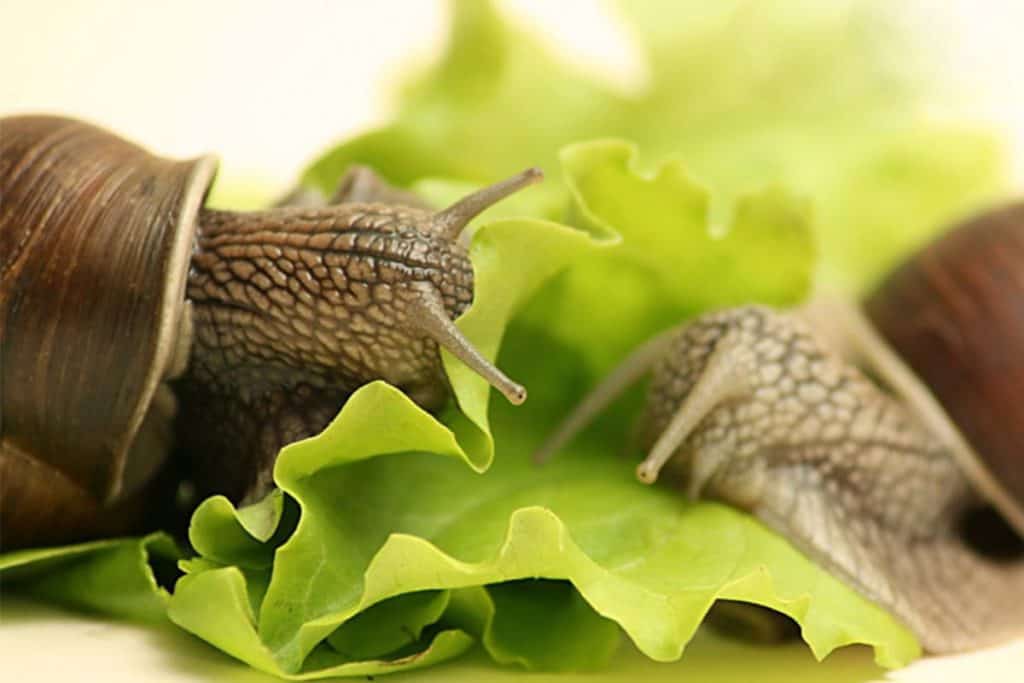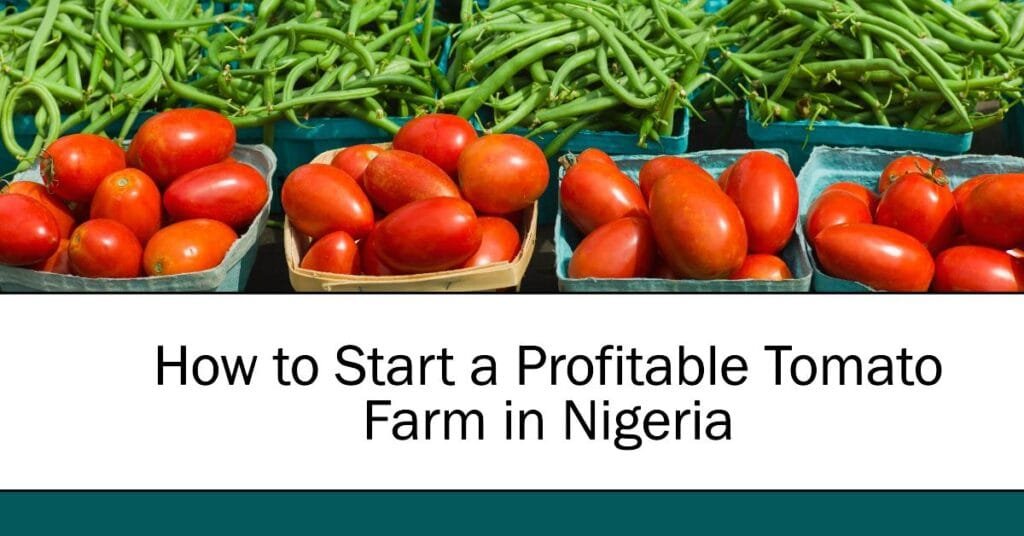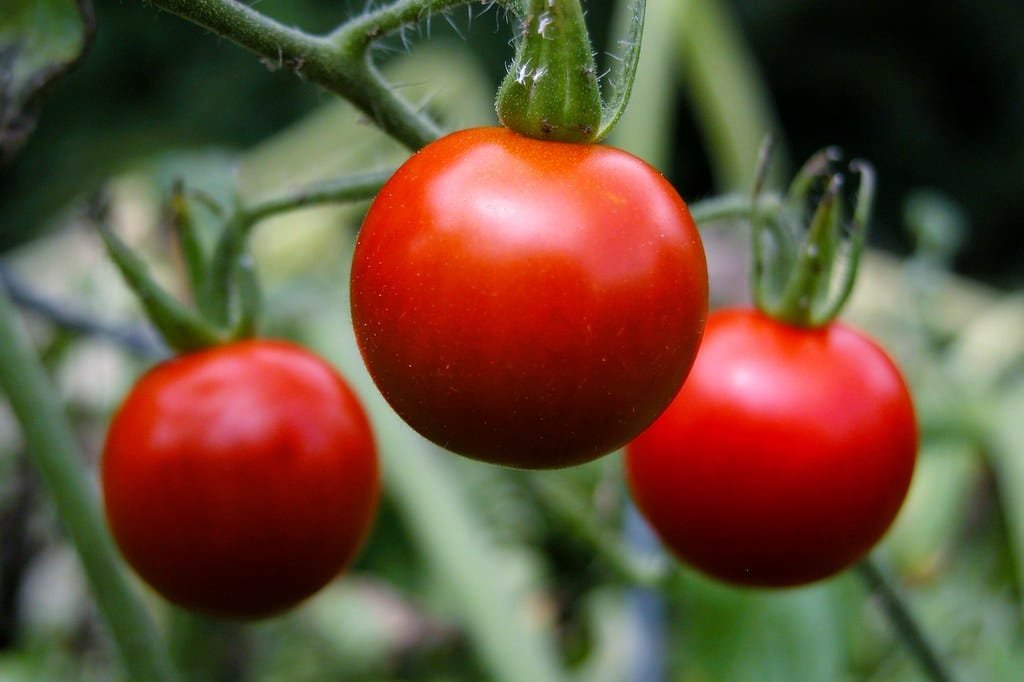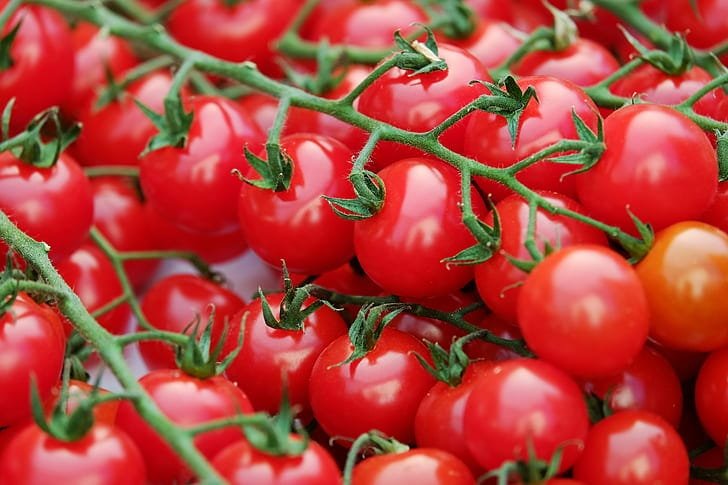Want to grow bigger, healthier snails? It all starts with what you feed them. Nutrition plays a massive role in how quickly snails grow, the strength of their shells, and even their ability to reproduce. Whether you’re farming snails for profit or keeping one as a pet, feeding them the right foods can make a world of difference.
Snails are fascinating creatures with unique dietary needs. They thrive on nutrient-rich plants, calcium-packed supplements, and a well-balanced mix of natural foods. But figuring out the perfect diet can be a bit tricky — especially when you’re trying to speed up growth. That’s where this guide comes in!
I’ll walk you through everything you need to know: what snails can and can’t eat, how to provide the nutrients they crave, and practical feeding tips to help your snails flourish. Plus, we’ll bust a few myths along the way (spoiler: yes, snails can eat tomatoes — but only sometimes!).
By the end of this guide, you’ll know exactly how to nourish your snails for faster growth and better health. Let’s get started!
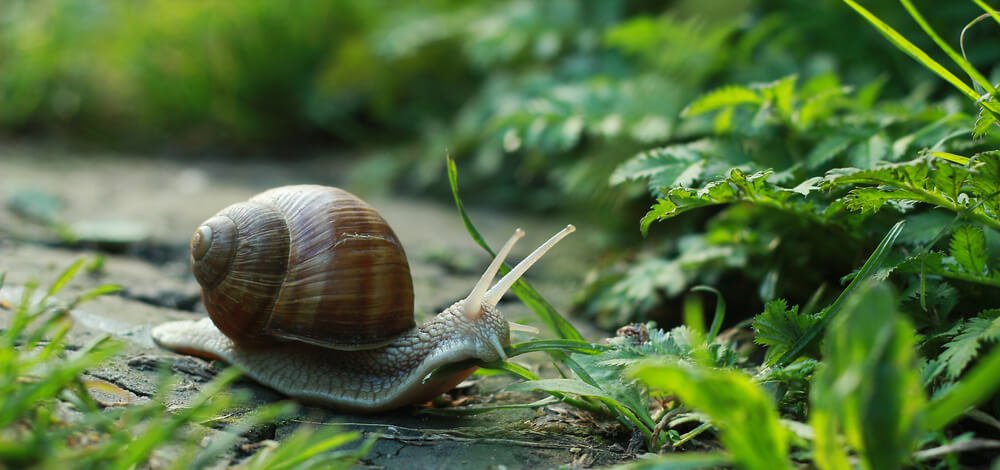
Understanding Snail Dietary Needs
Feeding snails properly isn’t just about tossing in scraps of food — their growth and well-being depend on meeting specific nutritional needs. Let’s explore what fuels healthy snail development and how we can replicate their natural diet for optimal results.
Snail Nutrition Basics
For snails to grow faster and develop sturdy, healthy shells, they need a well-rounded diet full of essential nutrients. Let’s break it down:
- Calcium: The foundation of snail health! Calcium is critical for shell development and strength, protecting snails from injuries and deformities. Without enough calcium, their shells can become brittle or misshapen. Research highlights that calcium supplementation significantly enhances snail growth and reduces shell fractures. Ideal sources include crushed eggshells, cuttlebone, and limestone.
- Protein: A growth accelerator! Protein supports tissue repair, muscle development, and reproductive health. Snails require protein-rich foods like moringa leaves, soaked fish flakes, and legumes. A study found that snails on high-protein diets grew faster and had higher reproduction rates compared to protein-deficient counterparts.
- Vitamins and Minerals: Essential for immunity, metabolism, and vitality, vitamins like A and E, along with trace minerals, keep snails thriving. Fresh produce — such as carrots, cucumbers, and leafy greens — provides these nutrients, promoting overall well-being.
What Snails Eat in the Wild
Understanding a snail’s natural diet helps us create the best possible meal plan in captivity.
In the wild, snails munch on:
- Decaying leaves and plant matter for fiber and nutrients
- Algae and fungi for extra minerals and gut health
- Fallen fruits and berries for natural sugars and vitamins
- Soft tree bark and moss for additional trace elements
Interestingly, wild snails instinctively seek calcium from soil particles and limestone deposits, balancing their nutritional intake. By mimicking this with a mix of calcium sources, leafy greens, and protein options, we can support faster growth and stronger shells in captive snails.
What Can Snails Eat?
Understanding the diverse dietary preferences of snails is essential for their health, growth, and reproduction. Feeding snails the right foods not only boosts their development but also prevents nutritional deficiencies that can harm their well-being. Let’s break down what snails can eat, including region-specific options and foods to avoid, so you can provide the best possible care.
General Foods Snails Can Eat
Snails are primarily herbivorous, but their diet goes beyond just leafy greens. They thrive on a variety of nutrient-rich foods that meet their calcium, protein, and hydration needs:
- Leafy Greens: Dark, leafy vegetables such as lettuce, spinach, and kale are excellent choices. They provide hydration and essential nutrients that support overall health (PetSnails Forum).
- Vegetables: Options like cucumber, zucchini, carrots, sweet potatoes, and mushrooms add fiber, vitamins, and minerals to their diet (PetSnails Forum).
- Fruits (in moderation): Apples, pears, and bananas offer natural sugars and vitamins, but should be fed sparingly to avoid overloading snails with sugar (PetSnails Forum).
- Calcium Sources: Calcium is non-negotiable for snails, as it strengthens their shells. Provide crushed eggshells, cuttlebone, limestone, or calcium blocks to support shell development and prevent deformities (TRW Consult).
- Protein Boosters: Snails need protein for muscle and tissue repair, especially during growth phases and reproduction. Fish flakes, soaked shrimp pellets, and moringa leaves are excellent protein sources (TRW Consult).
What Snails Eat in Nigeria
In Nigeria, snails have access to a variety of local, affordable, and nutrient-dense foods. If you’re raising snails in this region, you can easily find what they need:
- Local Greens: Fluted pumpkin leaves (Telfairia occidentalis) and waterleaf (Talinum triangulare) are widely available, highly nutritious, and loved by snails (TRW Consult).
- Available Calcium Sources: Crushed snail shells and oyster shells are natural and accessible sources of calcium, perfect for maintaining shell strength (TRW Consult).
- Affordable Protein Options: Moringa leaves, legumes, and groundnuts (peanuts) are cost-effective protein options that support growth and reproduction (TRW Consult).
What Snails Eat in Captivity
Providing snails with a balanced diet in captivity mimics their natural intake and keeps them healthy:
- Store-Bought Feeds and Supplements: Commercial snail feeds are specially formulated to meet their nutritional needs. Supplement these with fresh vegetables, fruits, and calcium sources for a well-rounded diet (TRW Consult).
- Safe Human Foods: Snails can eat human-grade vegetables and fruits as long as they are free from pesticides, washed thoroughly, and served in small portions (TRW Consult).
What Snails Shouldn’t Eat
Certain foods can harm snails, disrupt their digestive systems, or even be fatal. Here’s what to avoid:
- Toxic Plants: Onions, garlic, and citrus fruits contain compounds that are toxic to snails and can cause severe health issues (PetSnails Forum).
- Processed or Salty Foods: Processed foods and anything high in salt can dehydrate snails and damage their tissues (PetSnails Forum).
- Pesticide-Laden Produce: Even trace amounts of pesticides can be fatal for snails. Always choose organic produce or wash fruits and vegetables thoroughly before feeding (PetSnails Forum).
By carefully selecting what you feed your snails and understanding their regional dietary needs, you can promote healthy growth, strong shell development, and even boost reproduction.
What Do Snails Drink?
Hydration is just as important as nutrition for snails, as water plays a vital role in their survival, movement, and overall well-being. Unlike many animals, snails don’t drink water in the traditional sense — they absorb moisture through their skin and foot, making it essential to maintain a consistently humid environment. Let’s explore how snails stay hydrated and practical ways to ensure they get enough water.
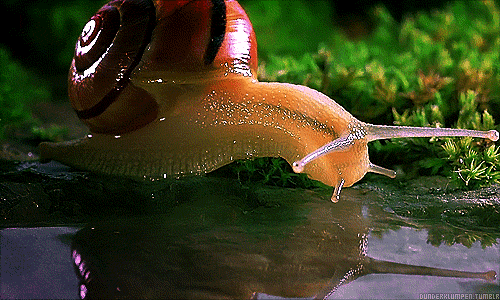
Importance of Moisture for Hydration
Snails rely on moisture to regulate their bodily functions, including digestion and mucus production. Without enough water, snails can become dehydrated, leading to lethargy, retracted bodies, or even death. In the wild, they seek out damp environments, so replicating this in captivity is crucial.
How Snails Absorb Water
Snails absorb water directly through their skin, especially the foot, which is the muscular part of their body that helps them glide across surfaces. They also drink by licking water droplets or moist surfaces. Maintaining a high-humidity habitat prevents their bodies from drying out and ensures they stay healthy and active.
According to research on terrestrial gastropods, optimal humidity levels should stay between 70-90% for most species (South, 2012). A moisture-rich environment not only helps snails stay hydrated but also supports essential processes like mucus production, which aids in movement and protects their soft bodies.
How to Keep Snails Hydrated
Here are a few practical ways to provide enough hydration for your snails:
- Water Dishes: Place a shallow dish of dechlorinated water in the enclosure. Make sure it’s not too deep to prevent drowning, especially for smaller snails. Snails will crawl in and drink as needed.
- Regular Misting: Spray the enclosure with water daily to maintain humidity. Use a spray bottle with fine mist settings to create an even layer of moisture without drenching the substrate.
- Moist Substrate: Use moisture-retaining substrates like coconut coir, sphagnum moss, or damp soil. Regularly check the substrate’s moisture level and rehydrate it as needed to prevent dryness.
- Fresh Vegetables & Fruits: Many of the foods snails eat, like cucumber and lettuce, have high water content. Including these in their diet naturally boosts hydration.
By understanding how snails absorb water and proactively maintaining a moist environment, you can prevent dehydration and help your snails thrive.
Feeding Snails for Faster Growth
Want your snails to grow bigger, faster, and healthier? The secret lies in crafting the perfect diet and feeding routine. Whether you’re raising snails for farming, research, or as pets, giving them the right balance of protein, calcium, and vitamins can significantly speed up their growth while keeping them robust and active.
Creating a High-Growth Diet
Snails need a nutrient-dense diet to fuel rapid development and build strong shells. Let’s break down what makes a growth-boosting meal plan:
- Protein-Packed Meals (2–3 Times a Week): Protein is essential for muscle and tissue development. Feed snails fish flakes, soaked shrimp pellets, or moringa leaves several times a week for steady growth (TRW Consult).
- Daily Access to Calcium: Calcium is a must for shell strength and resilience. Always provide calcium sources like cuttlebone, crushed eggshells, or limestone to prevent shell deformities and fragility (TRW Consult).
- Rotating Fruits and Veggies: Snails benefit from a variety of fruits and vegetables for balanced vitamins and minerals. Rotate foods like cucumbers, carrots, pumpkins, and apples to give them a full spectrum of nutrients (PetSnails Forum).
Feeding Frequency and Portions
Feeding snails the right amount at the right time prevents waste, avoids health issues, and supports optimal growth:
- Portions Based on Size and Species: Small snails eat less, while larger species need more substantial portions. A general rule is to offer enough food that can be consumed within 24 hours.
- Feeding Times: Snails are most active in the evening and at night, so feeding them during these times aligns with their natural rhythms and encourages better eating habits (PetSnails Forum).
- Avoid Overfeeding: Leftover, rotting food can attract pests and cause health issues. Remove uneaten food daily to keep the habitat clean and prevent mold or bacteria buildup.
Special Diet for Hatchlings & Young Snails
Young snails need even more delicate care to grow properly. Their developing shells and small bodies require soft, digestible foods packed with essential nutrients:
- Crushed Eggshell or Calcium Powder: Sprinkle powdered calcium over food to help hatchlings build strong shells from the start.
- Soft Vegetables and Fruits: Offer soft options like cucumber, steamed sweet potato, or banana slices that are easy for young snails to nibble on.
- Small Protein Portions: While protein is important, tiny snails can only handle small amounts. Offer finely crushed fish flakes or tiny bits of moringa leaves to avoid overwhelming their systems.
By carefully balancing nutrients, portion sizes, and feeding schedules, you can accelerate snail growth naturally and sustainably.
How to Feed Snails in Different Environments
Feeding snails isn’t a one-size-fits-all approach — the environment they live in affects how and what they eat. Whether your snails are in a terrarium, garden, or aquarium, tailoring feeding practices to their surroundings ensures they get proper nutrition without harming their habitat. Let’s break it down!
Feeding Land Snails
Land snails need a well-maintained habitat to thrive, and the way you present their food can make a huge difference:
- Food Placement: Place food directly on the soil, a flat stone, or a small dish to keep it clean and accessible. Avoid placing food on damp substrate to prevent quick spoilage.
- Maintaining Moisture: Snails need moisture to eat and digest properly. Lightly spray food with water to keep it fresh and easier for snails to consume.
- Monitoring Consumption: Check the habitat daily to remove leftover, decaying food that can attract pests or mold.
Feeding Snails in an Aquarium
Aquatic snails have unique feeding needs, especially since leftover food can impact water quality:
- Use Feeding Dishes or Pellets: Place food on a feeding dish or use sinking pellets that snails can easily access. This prevents food from floating around and decaying in hard-to-reach areas.
- Vegetable Slices: Blanched vegetables like zucchini, spinach, or cucumber can be attached to a clip and lowered into the tank. This makes it easier for snails to graze.
- Clean Up Leftovers: Remove uneaten food within 24 hours to prevent water contamination and algae growth. Clean feeding areas regularly to maintain water quality.
By adjusting feeding practices to fit their environment, you’ll help your snails stay healthy while keeping their habitat clean and balanced.
Can Snails Eat Tomatoes?
Yes, snails can eat tomatoes — but only in moderation. While tomatoes offer some nutritional benefits, their acidity can cause issues if fed too frequently or in large amounts.
Why Tomato Acidity Matters
Tomatoes contain acids that may irritate a snail’s digestive tract, potentially leading to discomfort or reduced nutrient absorption. Although snails might enjoy nibbling on soft, juicy tomato pieces, regular feeding can disrupt their gut balance and harm their health.
Best Practices for Feeding Tomatoes:
- Small Portions Only: Offer a thin slice or a small chunk of tomato no more than once a week.
- Remove Uneaten Bits Quickly: Tomatoes spoil fast and can attract mold or pests. Clear leftovers within 12–24 hours.
- Balance with Low-Acid Foods: If you occasionally give tomatoes, pair them with gentle, calcium-rich foods to counteract acidity.
Safer Alternatives to Tomatoes
If you’re looking for softer, hydrating foods without the acidic risk, try these instead:
- Cucumber: Packed with water and easy to eat.
- Zucchini: Soft, nutrient-dense, and snail-friendly.
- Pumpkin or Sweet Potato: Slightly sweeter, packed with vitamins, and great for growth.
Occasional tomato treats can add variety to a snail’s diet, but safer, gentler options are better for everyday feeding.
Common Feeding Mistakes to Avoid
Feeding snails seems straightforward, but a few common mistakes can quietly compromise their health and growth. Let’s break down the most frequent feeding errors and how to avoid them!
1. Feeding Only Fruits
While snails enjoy fruits, relying solely on them can cause nutrient imbalances. Fruits are often high in sugar and low in calcium, which is essential for shell development.
Why This Is a Problem:
- Can lead to weak, brittle shells or shell deformities.
- Excessive sugar may disrupt digestion and attract pests.
Fix It:
- Use fruits as treats, not staples. Stick to small portions, 1–2 times a week.
- Prioritize nutrient-rich veggies, leafy greens, and calcium sources like cuttlebone.
2. Ignoring Calcium Needs
Calcium is critical for snails to build and maintain strong, healthy shells. Without it, snails may suffer from soft or cracked shells and stunted growth.
Why This Is a Problem:
- Leads to shell erosion, making snails vulnerable to injury and dehydration.
- Severe calcium deficiency can shorten a snail’s lifespan.
Fix It:
- Always provide a calcium source: eggshells, cuttlebone, limestone, or oyster shells.
- Make calcium constantly available — snails will graze as needed.
3. Letting Food Rot in the Habitat
Leaving uneaten food to decay can introduce harmful bacteria and fungi into the snail’s habitat, posing serious health risks.
Why This Is a Problem:
- Spoiled food breeds mold, which can cause respiratory issues.
- Rotting food attracts pests like mites and fruit flies.
Fix It:
- Remove uneaten food within 24 hours to prevent spoilage.
- Feed smaller portions and adjust based on what your snails can consume overnight.
4. Not Balancing Protein with Plant Matter
Snails need protein for tissue growth and reproduction, but too much protein without enough plant matter can upset their digestive systems.
Why This Is a Problem:
- Excess protein can cause digestive stress and foul-smelling waste.
- Too little plant matter reduces fiber intake, affecting digestion.
Fix It:
- Feed protein-rich foods (like fish flakes or soaked shrimp pellets) 2–3 times a week.
- Ensure the majority of their diet comes from varied plant sources.
Feeding your snails properly is more than just offering food — it’s about balance, consistency, and monitoring their health. By steering clear of these common mistakes, you’ll set your snails up for long, healthy lives with vibrant growth and sturdy shells.
How Habitat Affects Growth
Creating the right habitat isn’t just about comfort — it directly influences how well your snails grow and thrive. Let’s break down the key environmental factors you need to get right.
1. Proper Humidity and Temperature
Snails need a moist, warm environment to stay active and healthy. Dry or overly hot conditions can cause dehydration and stress, while cold temperatures slow their metabolism and growth.
Ideal Conditions:
- Humidity: 75–90% (use a hygrometer to monitor)
- Temperature: 70–80°F (21–27°C)
Tip: Mist the enclosure daily to maintain humidity, and use a heat mat or lamp if temperatures drop too low.
2. Clean, Spacious Enclosures
Overcrowding can lead to stress, competition for food, and even injuries. Snails grow best in clean, spacious environments where they don’t have to fight for resources.
Fix:
- Provide at least 1 gallon of space per adult snail.
- Clean the habitat weekly to remove waste and leftover food.
3. Hiding Spots and Climbing Areas
Snails are naturally curious and need stimulation. Hiding spots help them feel safe, while climbing areas encourage movement, which strengthens muscles and supports overall health.
Easy Additions:
- For Hiding: Broken clay pots, cork bark, or leaf piles.
- For Climbing: Smooth rocks, branches, or mesh walls.
By crafting a well-balanced, enriching habitat, you give your snails the best chance to grow, stay healthy, and live their best lives.
Frequently Asked Questions (FAQs)
1. Can snails survive without calcium?
No, snails can’t survive long-term without calcium. Calcium is essential for shell development and overall health. Without it, their shells can become thin, brittle, and prone to cracking — leaving them vulnerable to infections and injury. Always provide a reliable calcium source like cuttlebone, eggshells, or limestone.
2. How often should I feed my snails?
Feed snails daily with a variety of vegetables, greens, and calcium. Protein can be offered 2–3 times a week for growth support. Make sure to remove any uneaten food within 24 hours to keep the habitat clean and safe.
3. Can snails eat kitchen scraps?
Some kitchen scraps are safe, like carrot peels or lettuce leaves, but avoid anything salty, processed, or seasoned. Also, thoroughly wash scraps to remove pesticides or chemicals before feeding.
4. What foods make snails grow faster?
A high-growth diet includes calcium (for shell strength), protein (for tissue development), and a mix of veggies and fruits (for vitamins and minerals). Rotate food options and maintain a balanced diet to support steady, healthy growth.
5. Can snails eat bread or pasta?
It’s best to avoid bread, pasta, and processed grains. These foods offer little nutritional value and can swell in a snail’s digestive system, potentially causing blockages.
6. Do snails need water dishes?
Land snails mostly hydrate through moisture in their environment and food, but providing a shallow water dish or misting the habitat helps maintain proper hydration. Just ensure the dish is shallow to prevent accidental drowning.
7. Are there any plants that are toxic to snails?
Yes! Avoid giving snails onions, garlic, citrus fruits, or anything with natural toxins. These can harm their digestive systems and even be fatal in larger amounts.
8. How do I know if my snail is underfed or malnourished?
Signs of malnutrition include a thinning or cracked shell, lethargy, and slow growth. If you notice these, check their diet — they might be missing vital nutrients like calcium or protein.
9. Can snails eat the same foods every day?
Variety is key! While they might happily munch on cucumbers daily, a monotonous diet can lead to nutrient deficiencies. Rotate foods to provide a full spectrum of nutrients.
10. How do I prevent pests in my snail habitat?
Rotting food attracts pests like mites or gnats. Prevent infestations by removing leftover food daily, keeping the habitat clean, and maintaining proper humidity.
Conclusion & Key Takeaways
Feeding snails the right way is more than just offering scraps or garden greens — it’s about understanding their unique nutritional needs and creating an environment where they can thrive. A well-balanced diet, combined with proper habitat conditions, ensures your snails grow healthy, active, and strong.
Key Takeaways:
- Prioritize Calcium & Protein: Snails need calcium for shell development and protein for muscle growth. Consistently provide sources like cuttlebone, eggshells, fish flakes, or shrimp pellets.
- Offer a Variety of Vegetables & Greens: Rotate veggies, leafy greens, and safe fruits to supply essential vitamins and minerals while keeping your snails’ diet diverse and enriching.
- Maintain a Clean, Humid Environment: Snails thrive in moist conditions with high humidity. Regularly clean the habitat, remove leftover food, and provide hiding and climbing spots.
- Observe Eating Habits: Watch how your snails eat — changes in appetite, shell appearance, or activity can signal potential health issues. Catching these early makes a huge difference.
By following these guidelines, you’ll create the ideal conditions for your snails to flourish. Whether you’re a hobbyist or a small-scale farmer, giving your snails the care and nutrition they deserve leads to happier, healthier creatures. Happy snail keeping!
